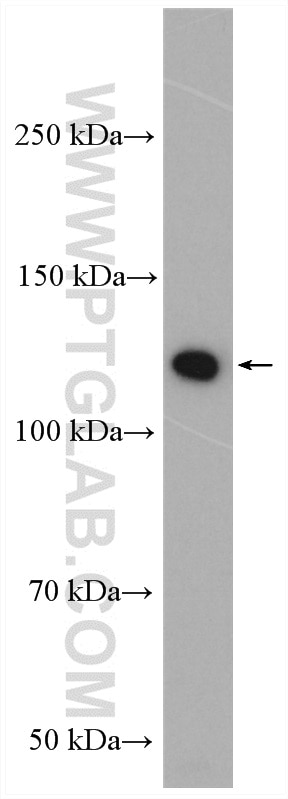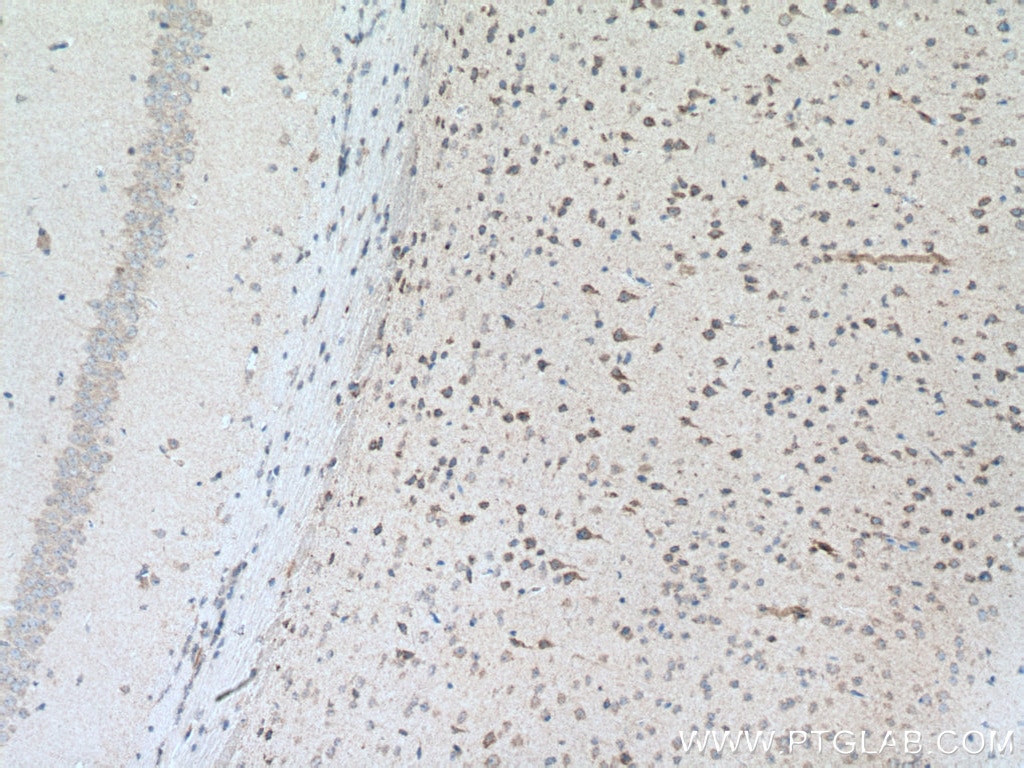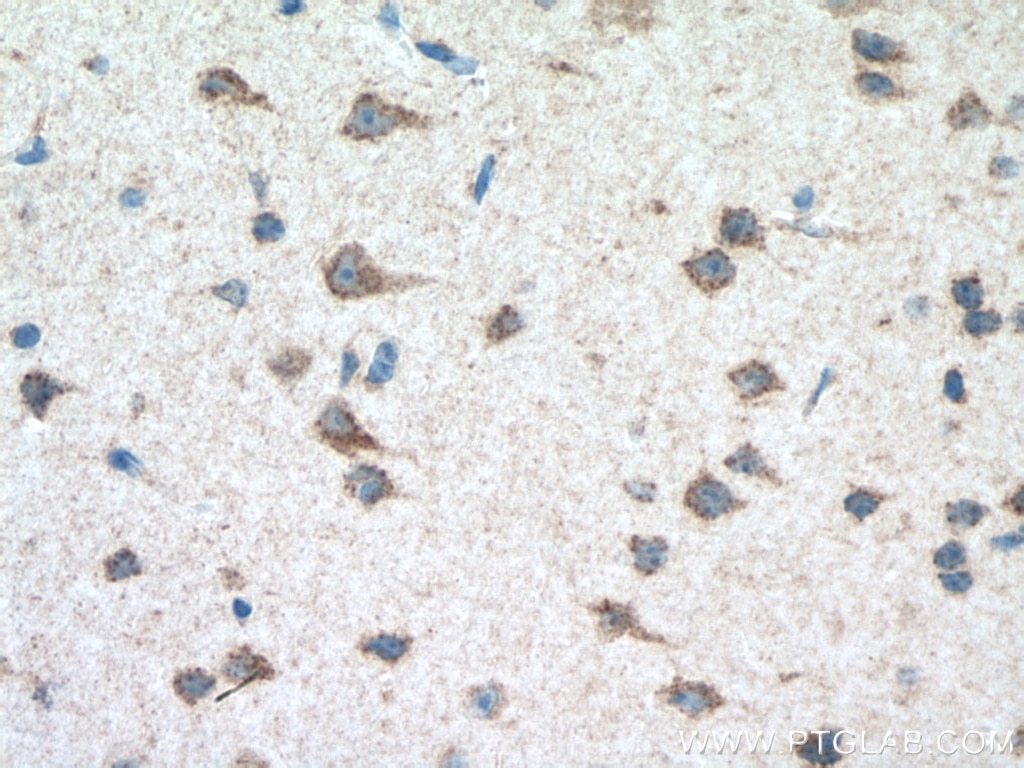PARK9/ATP13A2 Polyclonal antibody
PARK9/ATP13A2 Polyclonal Antibody for WB, IHC, ELISA
Host / Isotype
Rabbit / IgG
Reactivity
mouse
Applications
WB, IHC, ELISA
Conjugate
Unconjugated
Cat no : 19141-1-AP
Synonyms
Validation Data Gallery
Tested Applications
| Positive WB detected in | mouse brain tissue |
| Positive IHC detected in | mouse brain tissue Note: suggested antigen retrieval with TE buffer pH 9.0; (*) Alternatively, antigen retrieval may be performed with citrate buffer pH 6.0 |
Recommended dilution
| Application | Dilution |
|---|---|
| Western Blot (WB) | WB : 1:200-1:1000 |
| Immunohistochemistry (IHC) | IHC : 1:50-1:500 |
| It is recommended that this reagent should be titrated in each testing system to obtain optimal results. | |
| Sample-dependent, Check data in validation data gallery. | |
Product Information
The immunogen of 19141-1-AP is PARK9/ATP13A2 Fusion Protein expressed in E. coli.
| Tested Reactivity | mouse |
| Host / Isotype | Rabbit / IgG |
| Class | Polyclonal |
| Type | Antibody |
| Immunogen | PARK9/ATP13A2 fusion protein Ag11435 |
| Full Name | ATPase type 13A2 |
| Calculated Molecular Weight | 1158 aa, 126 kDa |
| Observed Molecular Weight | 125-130 kDa |
| GenBank Accession Number | BC030267 |
| Gene Symbol | ATP13A2 |
| Gene ID (NCBI) | 23400 |
| RRID | AB_2918064 |
| Conjugate | Unconjugated |
| Form | Liquid |
| Purification Method | Antigen affinity purification |
| Storage Buffer | PBS with 0.02% sodium azide and 50% glycerol pH 7.3. |
| Storage Conditions | Store at -20°C. Stable for one year after shipment. Aliquoting is unnecessary for -20oC storage. 20ul sizes contain 0.1% BSA. |
Background Information
ATP13A2 belongs to the P-type superfamily of ATPases that transport inorganic cations and other substrates across cell membranes. It appears to protect cells from manganese and zinc toxicity, possibly by causing cellular efflux and/or lysosomal sequestration; and from iron toxicity, possibly by preserving lysosome integrity against iron-induced lipid peroxidation (21724849)(24334770). However, it potentiates the toxic effects of cadmium and nickel on developing neurites, and of the widely used herbicide paraquat possibly by increasing polyamine uptake. Deficiency is associated with spastic paraplegia and Kufor-Rakeb syndrome, in which there is progressive parkinsonism with dementia.
Protocols
| Product Specific Protocols | |
|---|---|
| WB protocol for PARK9/ATP13A2 antibody 19141-1-AP | Download protocol |
| IHC protocol for PARK9/ATP13A2 antibody 19141-1-AP | Download protocol |
| Standard Protocols | |
|---|---|
| Click here to view our Standard Protocols |




